Local ecosystems are often delicate, with a fine balance between plant life and wildlife. Yet, this balance is frequently disrupted by certain plants that, while sometimes aesthetically pleasing, are silently waging a war against native fauna. This article delves into the world of such flora, shedding light on the specific plants that could be killing wildlife. The focus will be on those species that, through their invasive tactics or toxic properties, have become a threat to the animals that share their habitat.
Contents
Purple Loosestrife – The Beautiful Invader
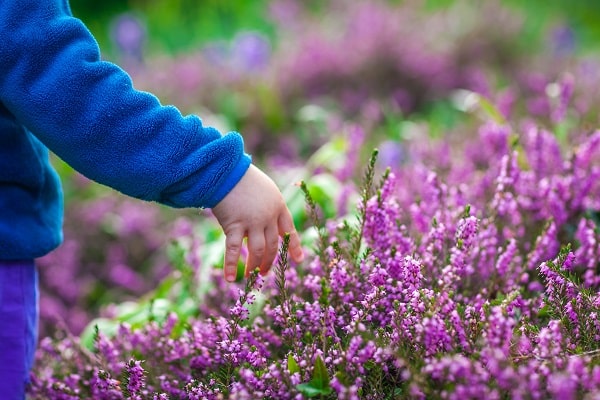
Purple Loosestrife’s vibrant spikes may enhance wetland aesthetics, but its invasive nature wreaks havoc on local ecosystems. Native to Europe, it has colonized American wetlands, aggressively outcompeting indigenous plants and diminishing insect diversity, which many birds and amphibians rely on for food. Control efforts, including the release of beetles that feed on the plant, are in place, yet its ability to produce copious seeds that spread via waterways makes eradication a challenge.
The spread of Purple Loosestrife has extensive ecological consequences, disrupting habitats and making them inhospitable for various species. It overruns wetlands, affecting fish spawning by smothering necessary underwater plants and altering stream flow, which leads to sediment buildup and water quality changes. These shifts can ripple through the ecosystem, leading to declines in fish populations and the larger predators that depend on them, thus unbalancing the food chain.
English Ivy – The Climbing Menace

The relentless spread of English Ivy across forest floors and tree trunks in North America illustrates the plant’s invasive capabilities. Its dense foliage not only deprives native plants of sunlight but also alters the very structure of the forest. The ivy’s thick leaves and vines create an impenetrable barrier, disrupting the natural habitat of many ground-nesting birds and small mammals. These creatures find themselves without access to their usual nesting sites or food sources, leading to a decline in their populations. Moreover, the ivy’s rapid growth allows it to climb to the forest canopy, overwhelming and eventually killing mature trees by blocking sunlight and sapping nutrients.
The ecological impact of English Ivy does not stop at the forest’s edge. The plant’s ability to spread across the ground at a rapid pace allows it to invade parks, gardens, and other urban green spaces, where it continues to outcompete native species. The displacement of native understory plants by the ivy’s unyielding advance results in a loss of biodiversity. This loss is not just a concern for conservationists but also for the wildlife that depends on a variety of native plants for food and shelter. Insects that specialize in feeding on native plants decline, which in turn affects the bird populations that feed on these insects.
Japanese Knotweed – The Indestructible Force
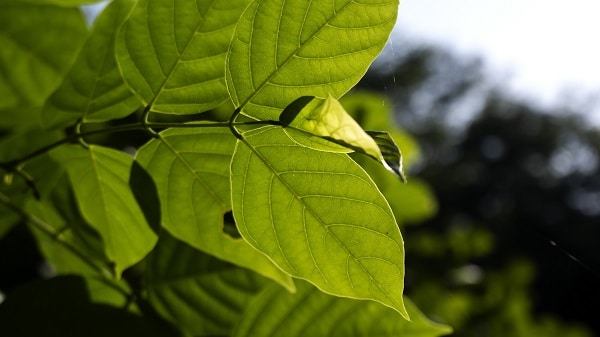
Japanese Knotweed presents a formidable challenge to local ecosystems due to its robust nature and ability to grow through concrete and asphalt. This resilience makes it a notorious invader, particularly in urban and suburban environments where it can damage infrastructure. Its presence in natural habitats is equally concerning; it grows in dense thickets that overshadow native plants, leading to a reduction in biodiversity. The plant’s thick root system alters the soil structure and chemistry, making it inhospitable for native plant species that local wildlife depends on.
The control of Japanese Knotweed has become a topic of intense research due to its vigorous growth pattern and resistance to conventional removal methods. Cutting or digging up the plant often leads to vigorous regrowth, as even a tiny fragment of the root can regenerate into a new plant. Chemical treatments can be effective but may have unintended consequences on the surrounding flora and fauna. Biological control methods, such as introducing natural predators from the plant’s native habitat, are being explored as a more sustainable solution.
Kudzu – The Vine That Ate The South
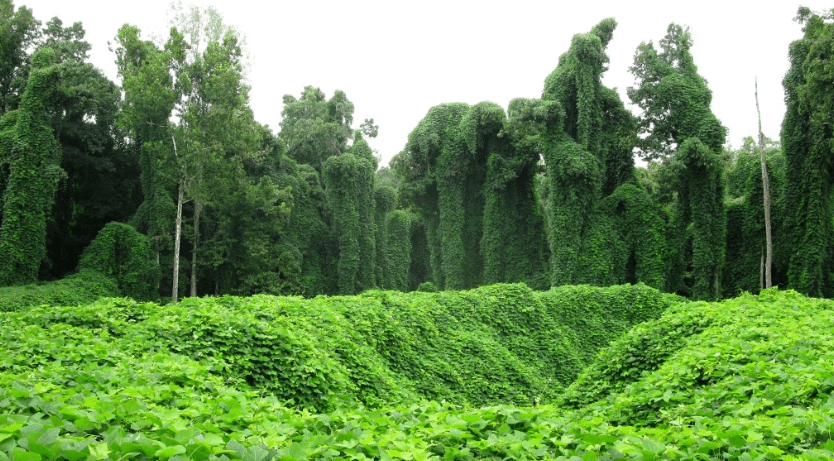
Kudzu, often referred to as “the vine that ate the South,” is notorious for its rapid growth rate and ability to engulf entire landscapes. Introduced to the United States as a soil erosion control method, it quickly became clear that Kudzu was more foe than friend. Its vines can grow up to a foot per day during the peak of the growing season, smothering plants, encircling trees, and even covering buildings. This relentless growth not only chokes out native plants but also leads to a decrease in the diversity of the ecosystem, as the thick mat of vegetation it forms can prevent new growth of other species.
The impact of Kudzu on local wildlife is profound. As it blankets forests and fields, it deprives animals of their natural habitats and food sources. The dense foliage of Kudzu can collapse smaller trees and shrubs, eliminating nesting sites for birds and shelter for ground animals. Furthermore, the vine’s ability to fix nitrogen in the soil can lead to nutrient imbalances, which may further alter the local flora, creating a ripple effect through the food chain. Despite efforts to control its spread, Kudzu remains a symbol of ecological misjudgment and a persistent challenge for wildlife conservation.
Oleander – The Deadly Beauty
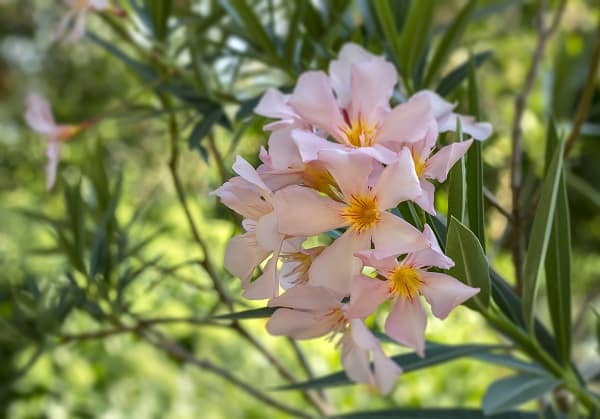
Oleander’s vibrant blossoms and lush foliage line many landscapes, offering a picturesque view that belies its lethal nature. Every part of the Oleander plant is poisonous, containing compounds that can cause severe symptoms and even death in a variety of animals, including humans. When local wildlife, such as deer or small mammals, ingest Oleander leaves or flowers, they can suffer from gastrointestinal, heart, and nervous system issues. Birds that use the plant for shelter or nesting may also be at risk, as they can inadvertently consume the toxic leaves or nectar. The danger extends to aquatic wildlife if Oleander clippings are discarded near water bodies, leading to contamination and potentially poisoning fish and other aquatic organisms.
The risk Oleander poses to wildlife necessitates careful consideration in its use in landscaping, especially in areas that are accessible to animals. Education about the plant’s toxicity is crucial for communities living in proximity to Oleander plants. Pet owners, in particular, must be vigilant, as domestic animals may be drawn to the bright flowers or fallen leaves. Safe planting practices, such as ensuring the plants are out of reach of animals and proper disposal of clippings and debris, can mitigate the risks. Despite its beauty, the Oleander plant requires a level of respect and caution to ensure that it does not become a fatal attraction in the local ecosystem.
Castor Bean – The Attractive Killer
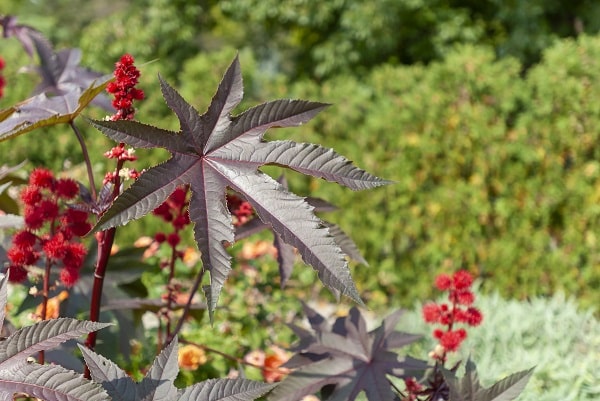
The Castor Bean plant, with its large, lobed leaves and spiky seed pods, is a stunning ornamental plant that harbors a dark secret. It is the source of ricin, one of the most toxic naturally occurring substances known. Wildlife, attracted to the seeds by their bright colors and shiny coating, can be fatally poisoned by ingesting even a single seed. The toxins can cause severe abdominal pain, vomiting, and internal bleeding in animals, leading to a rapid decline in health and often death. The plant’s invasive nature allows it to spread quickly, posing a risk to a wide array of wildlife, from insects to large mammals.
The presence of Castor Bean plants in an area can create an ecological trap for wildlife, luring them with the promise of food, only to deliver a lethal dose of poison. Efforts to control the spread of Castor Bean plants are essential, especially in regions where they are not native and have no natural predators. Awareness campaigns can inform the public about the dangers of growing Castor Bean plants in gardens and public spaces. Removal of the plants from areas frequented by wildlife, along with careful handling and disposal of the seeds, can help prevent accidental poisonings and protect local animal populations.
Giant Hogweed – The Blinding Weed

Giant Hogweed, a towering plant that can reach heights of over 14 feet, is as dangerous as it is impressive. Its sap contains toxic chemicals that, when in contact with skin and exposed to sunlight, can cause severe burns, blistering, and long-lasting scars. For wildlife, brushing against this plant can result in similar injuries, potentially leading to blindness if the sap enters the eyes. The danger is not limited to direct contact; as Giant Hogweed dies back, it leaves behind bare soil susceptible to erosion, which can degrade habitats and make them uninhabitable for local wildlife. The plant’s large leaves and tall stature also shade out native vegetation, leading to a decrease in plant diversity.
The control and eradication of Giant Hogweed are critical to protecting both wildlife and human health. Public education on identifying and safely removing Giant Hogweed is vital, as its removal often requires protective clothing and equipment to prevent sap exposure. Reporting sightings to local authorities can help manage the spread of this noxious weed. In some areas, programs are in place to track and eliminate Giant Hogweed, often involving a combination of mechanical removal and careful use of herbicides. These efforts are essential to restore and protect the habitats that native plants and animals rely on.
Join The Effort To Protect Your Local Wildlife
In the face of such botanical threats to your local wildlife, action is not just a choice but a responsibility. By choosing native species for your gardens, supporting conservation efforts, and educating others about these harmful plants, each step can lead to a healthier, more balanced ecosystem. Your involvement can make a significant difference in safeguarding the natural habitats that are vital for wildlife to thrive. So why not commit to being a steward of your environment and protect the intricate web of life that sustains you and your community?


